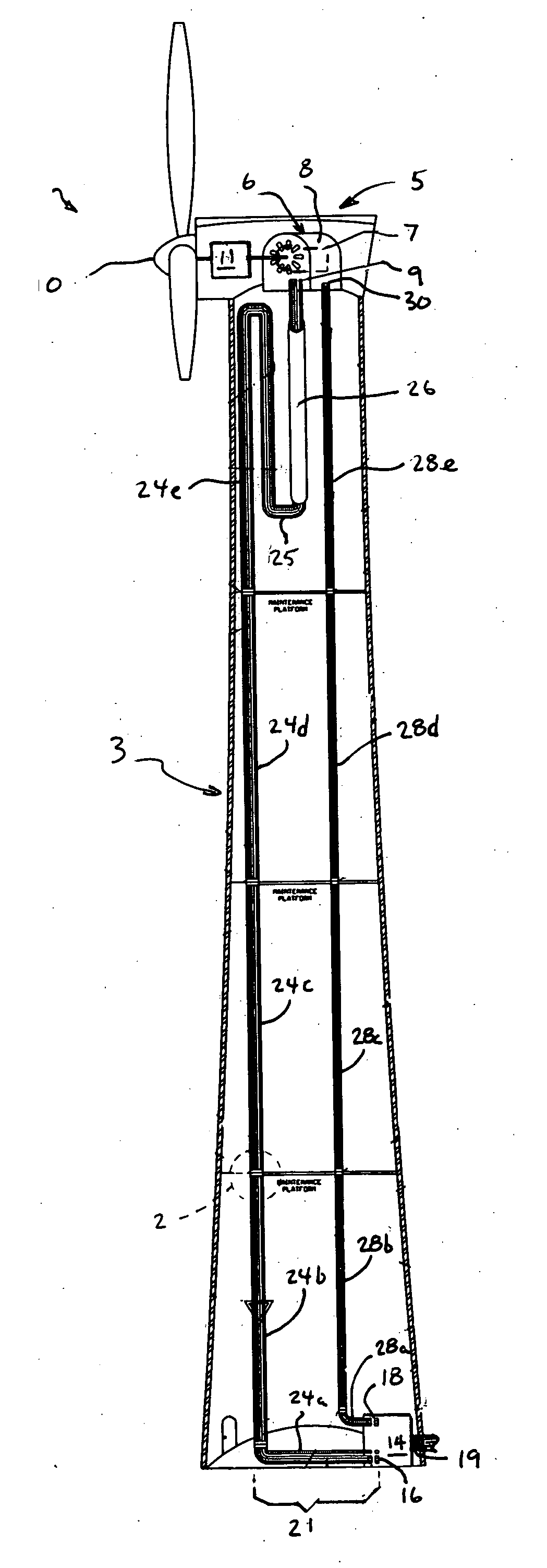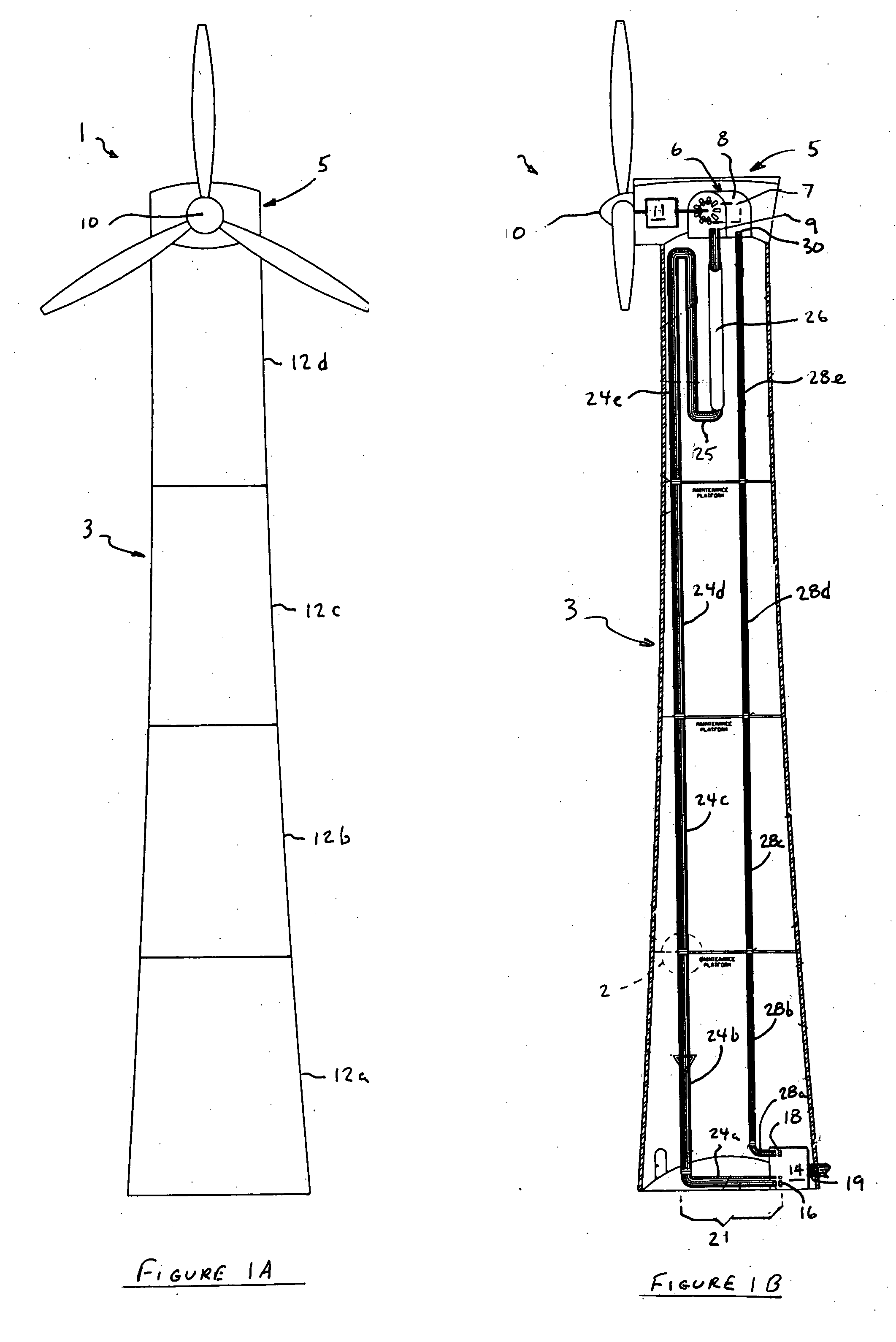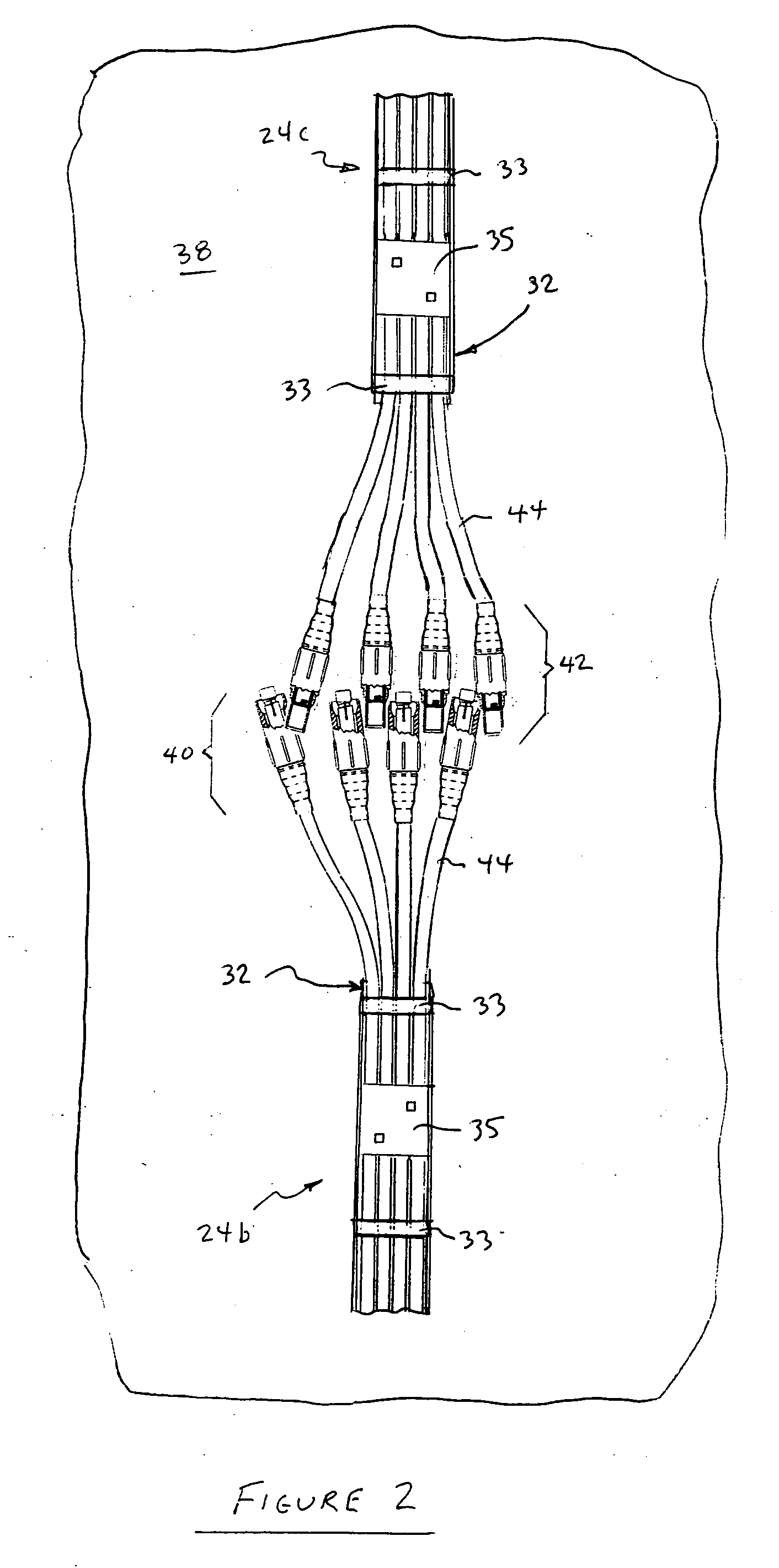Windmill cable system and method
a windmill and cable technology, applied in the direction of coupling device connections, machines/engines, mechanical equipment, etc., can solve the problems of prohibitively difficult and dangerous for construction crews to hoist and mount such heavy cables, difficult and time-consuming splicing operations, and difficult and time-consuming to apply to a dense configuration of relatively stiff cable ends. , to achieve the effect of reducing the amount of tortional force, enhancing the ability of the cable, and reducing stress
- Summary
- Abstract
- Description
- Claims
- Application Information
AI Technical Summary
Benefits of technology
Problems solved by technology
Method used
Image
Examples
Embodiment Construction
[0021] With reference now to FIGS. 1A and 1B, wherein like numerals designate like components throughout all the several figures, the electricity generating windmill 1 that the cable system of the invention is applicable generally to includes a support base 3 having a head assembly 5 oscillatorily mounted at the top thereof.
[0022] The head assembly 5 houses a DC generator 6 having a rotor 7 and stator 8, as well as power outlet terminal 9. The head assembly 5 further includes a blade assembly 10 driven by ambient wind. A gear train 11 couples the output shaft of the blade assembly 10 to the input shaft of the DC generator 6.
[0023] The support base 3 is formed from a plurality of stacked base sections 12a-12d. An inverter circuit 14 is disposed in the interior of the support base 3 at its bottom. The inverter circuit 14 includes an inlet terminal 16 for receiving direct current produced by the generator 6 and converting it into alternating current. The inverter circuit 14 further i...
PUM
 Login to View More
Login to View More Abstract
Description
Claims
Application Information
 Login to View More
Login to View More - R&D
- Intellectual Property
- Life Sciences
- Materials
- Tech Scout
- Unparalleled Data Quality
- Higher Quality Content
- 60% Fewer Hallucinations
Browse by: Latest US Patents, China's latest patents, Technical Efficacy Thesaurus, Application Domain, Technology Topic, Popular Technical Reports.
© 2025 PatSnap. All rights reserved.Legal|Privacy policy|Modern Slavery Act Transparency Statement|Sitemap|About US| Contact US: help@patsnap.com



